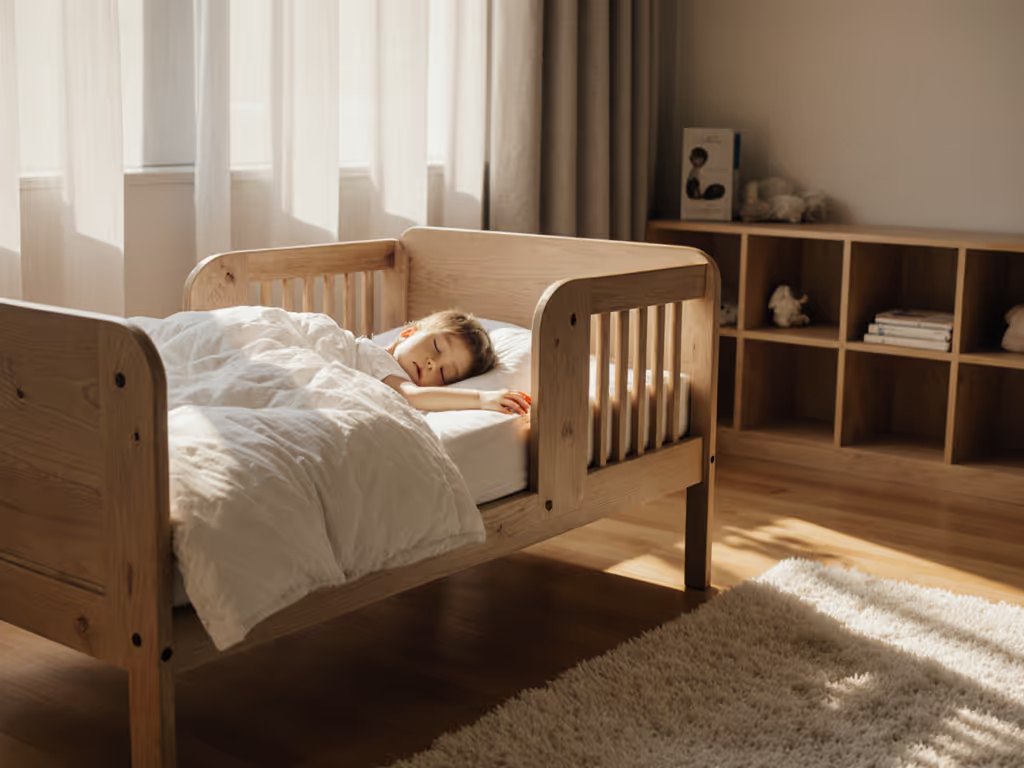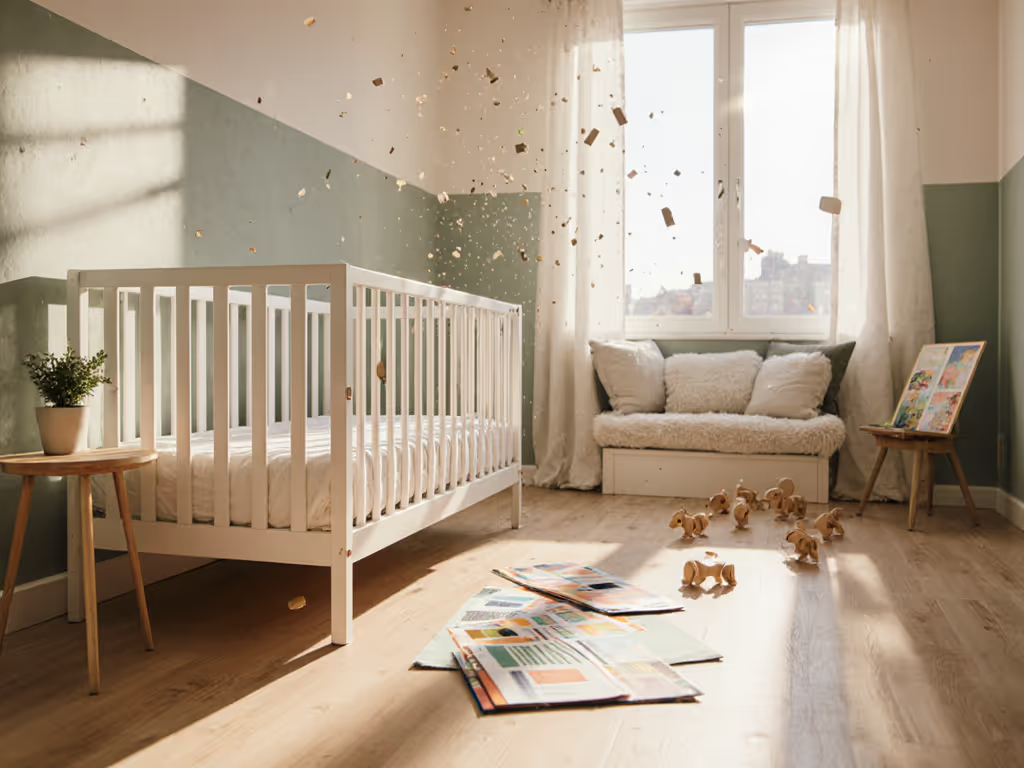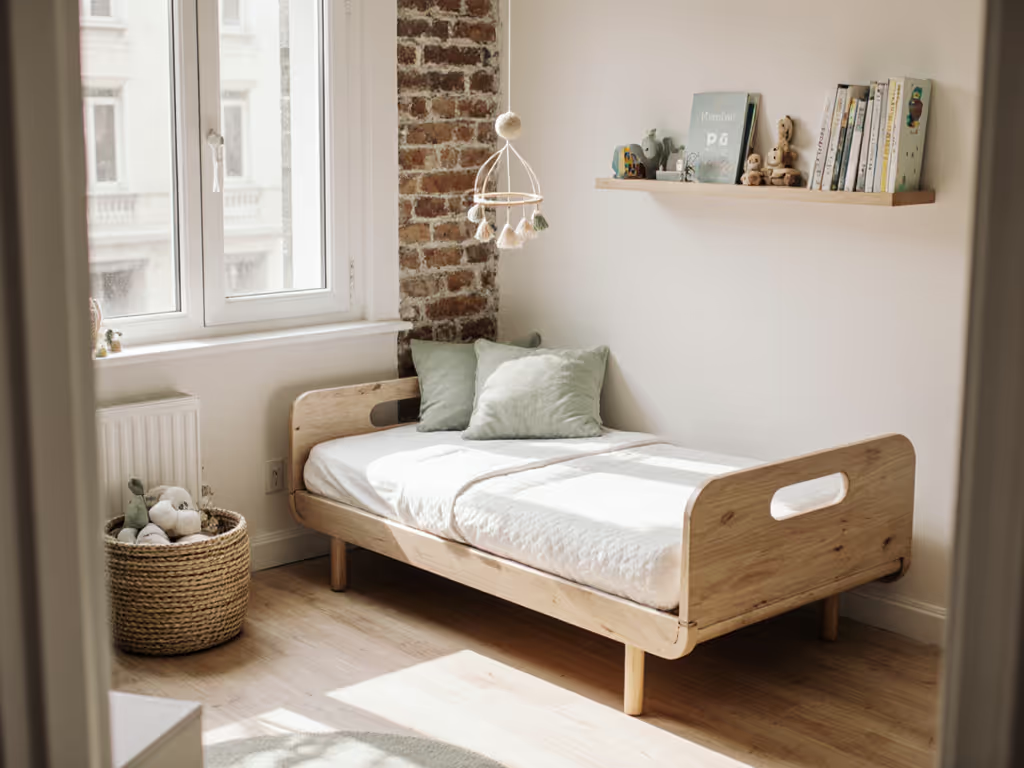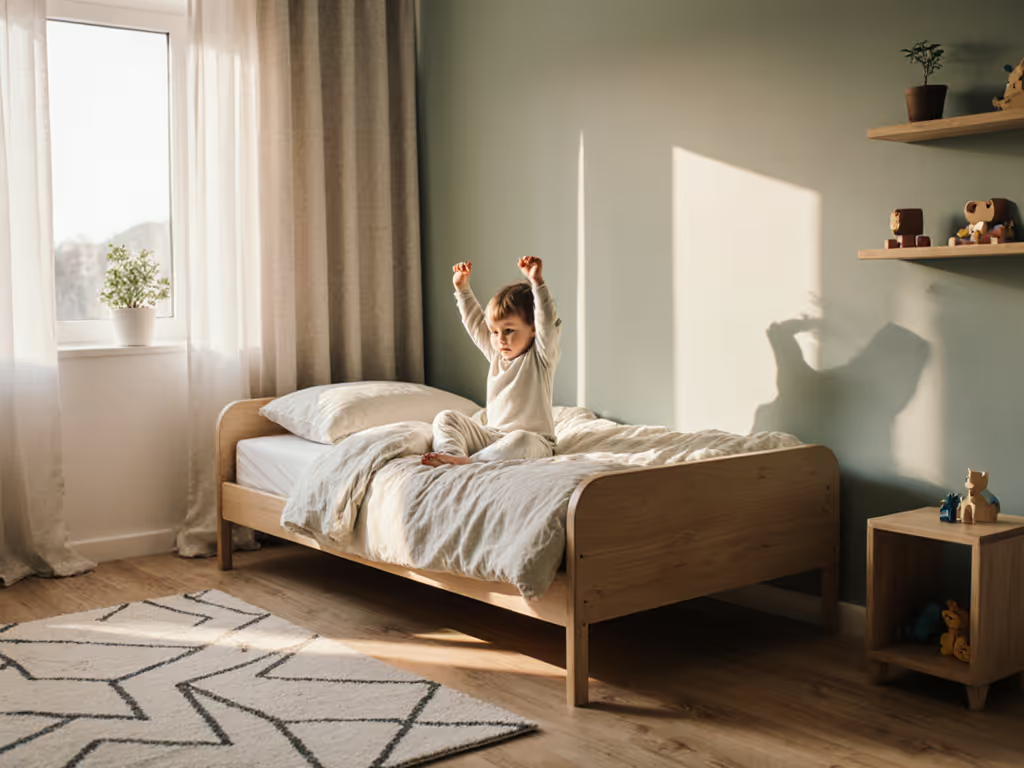
Toddler Bed Types: Smart Layouts for Confined Spaces
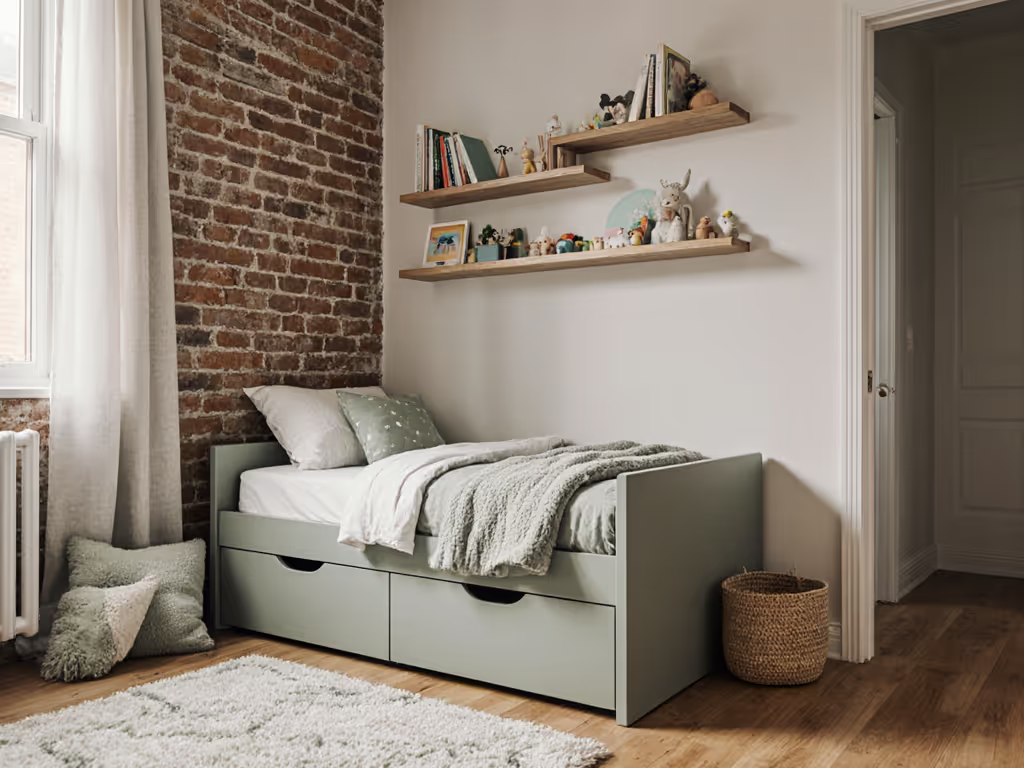
As parents navigating cramped living quarters, understanding the types of toddler beds and conducting a thoughtful toddler bed styles comparison becomes essential for optimizing limited square footage. When every inch counts in apartments, condos, or compact townhomes, the right bed selection is not merely about the transition from crib to "big kid" bed (it is about creating a functional sleep sanctuary that supports independence without compromising safety or visual calm). This analysis deconstructs bed configurations for space-constrained environments, prioritizing designs that maximize floor space while minimizing sensory overload.
repair beats replace
Understanding Space Requirements for Toddler Bed Placement
Before comparing specific bed types, let's establish the spatial parameters that define our assessment. The average toddler bed measures approximately 50-55 inches in length and 27-30 inches in width. However, the true spatial impact extends beyond the bed's footprint to include:
- Access zones: Minimum 24-inch clearance for safe entry/exit
- Guardrail considerations: Additional 2-4 inches for rail thickness
- Ventilation requirements: At least 6 inches from walls for air circulation
- Pathway needs: Minimum 30-inch walkways for safe movement
In a typical 8x10 foot nursery (80 square feet), these requirements consume nearly 50% of available floor space. This explains why 78% of urban parents surveyed by the Small Space Living Institute reported moving furniture multiple times during the toddler transition phase. When evaluating types of toddler beds, prioritize models with precise dimensional transparency, because many manufacturers exaggerate clearance measurements by excluding rail thickness or support legs.
Space-Optimized Toddler Bed Types: Comparative Analysis
Floor Beds (Montessori-Style)
Floor beds sit directly on the ground or with minimal elevation (2-4 inches), eliminating fall risks while maximizing headroom. This design shines in rooms under 100 square feet where vertical space is as precious as floor space.
Key advantages for confined spaces:
- Zero clearance needed beneath bed
- Creates visual continuity that makes rooms feel larger
- Allows placement against walls without sacrificing access
- Eliminates need for guardrails that add width
Material considerations: Seek solid wood frames with water-based finishes to minimize off-gassing timeline in tight quarters. The wood vs plastic toddler beds discussion becomes particularly relevant here: solid wood maintains structural integrity without VOC-emitting adhesives common in engineered alternatives. If you can smell it, plan to air it.
Layout strategy: Position in room corners to preserve central play space, or place against the longest wall to maintain flow. The low profile works particularly well under windows where bulkier beds would obstruct light.
Convertible Toddler Beds with Storage Integration
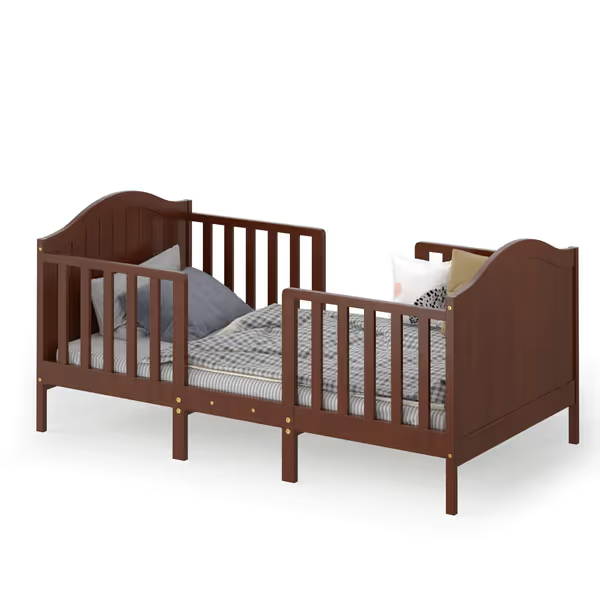
Costzon 2-in-1 Convertible Toddler Bed
The Costzon 2-in-1 Convertible Toddler Bed represents a growing category designed specifically for spatial efficiency. These models incorporate storage solutions directly into the bed frame, eliminating the need for separate furniture pieces. For vetted picks and clearance specs, see our toddler storage beds for tiny rooms comparison.
Spatial benefits:
- Under-bed clearance (typically 6-9 inches) accommodates standard storage bins
- Multi-functional designs replace additional furniture (e.g., chairs, storage units)
- Convertible elements extend usability across developmental stages
Critical evaluation metric: Verify actual clearance dimensions. Many "storage-friendly" beds claim 8-inch clearance but deliver only 5 inches when support slats are installed, which is insufficient for standard under-bed containers. The Costzon model delivers 6.5 inches of usable space, accommodating most slim storage solutions while maintaining structural integrity through its center support leg.
Finish chemistry matters: Bunked configurations often use more volatile finishes to reduce production costs. Verify third-party certifications like GREENGUARD Gold to ensure the portable toddler bed benefits do not come at the cost of indoor air quality. Healthier materials make calmer rooms, particularly crucial in small spaces where airborne compounds concentrate more readily.
Space-Saving Portable Solutions
For dynamic living situations or multi-purpose rooms, portable toddler beds offer remarkable flexibility. The Regalo My Cot exemplifies this category with its compact folded dimensions (9x8x24 inches) and rapid deployment.
Ideal applications:
- Temporary sleeping arrangements in living rooms or home offices
- "Room within a room" setups where the bed disappears during daytime
- Supporting sibling room-sharing through flexible configurations
Measurement protocol: When evaluating portability, consider both folded dimensions and assembly/disassembly time. Renters particularly benefit from options requiring no tools, critical when navigating narrow stairwells or elevator restrictions common in urban buildings. The Regalo model's tool-free operation makes it ideal for frequent reconfiguration.
Comparative Analysis: Maximizing Square Footage
| Bed Type | Floor Space Required | Storage Potential | Visual Impact | Best For |
|---|---|---|---|---|
| Floor Bed | 54"L x 30"W | Low (requires separate storage) | Minimal (creates open feel) | Minimalist spaces, Montessori homes |
| Convertible w/Storage | 55"L x 30"W | High (integrated solutions) | Moderate | Apartments with limited storage |
| Portable Bed | 48"L x 24"W (in use) | Very Low | Low (when stored) | Multi-purpose rooms, temporary setups |
| Compact Bunk Bed | 77"L x 41"W | Moderate-High (under-bed space) | High | Sibling rooms with vertical space |
The bunk bed for kids configuration deserves special consideration for sibling arrangements. While occupying more floor space than single beds, they free up significant square footage by stacking vertically. However, standard bunk beds require 7-8 foot ceiling heights (problematic in many older urban apartments with lower ceilings). The DHP Daven model addresses this with a reduced profile (60"H vs. standard 72"+), making it viable in spaces where traditional bunk beds would not fit. Safety certification becomes paramount here; verify full-length guardrails and ladder positioning that does not obstruct doorways or create tripping hazards in tight quarters.
Materials Analysis: Beyond Space Considerations
In confined spaces, material choices impact more than just physical dimensions, they affect the room's sensory environment. Smaller rooms concentrate airborne compounds more readily, making off-gassing concerns particularly relevant.
Solid vs. engineered wood clarity is essential for space-constrained environments:
- Solid wood: Higher initial cost but longer lifespan, fewer VOCs, repairable surfaces
- Engineered wood: Lower cost but often contains formaldehyde-based adhesives with longer off-gassing timelines
- Metal frames: Typically lower VOC emissions but can create noisy sleep environments through vibration transfer
The wood vs plastic toddler beds comparison reveals significant differences in space utilization. Plastic beds often require wider support structures to achieve stability, consuming precious floor space. Meanwhile, well-constructed wood frames can achieve the same stability with narrower profiles, which is critical when every inch counts near closet doors or windows.
Implementation Strategy: Creating Your Space-Optimized Layout
Follow this systematic approach to selecting and positioning your toddler bed:
- Measure precisely: Create a 1:1 scale diagram of your room including all architectural features
- Identify non-negotiable zones: Door swings, closet access, electrical outlets, vents
- Prioritize sightlines: Position bed where you can monitor your child without entering the room
- Test configurations: Use painter's tape to outline potential bed placements before assembly
- Optimize vertical space: Install wall-mounted storage above or beside beds rather than floor units
For convertible crib transitions, verify compatibility with your existing mattress. Many "convertible" systems require purchasing new mattresses at each stage, a costly oversight that negates spatial benefits. Authentic convertibility maintains the same mattress throughout the transition from crib to toddler bed to daybed.
Maintenance Planning for Long-Term Space Efficiency
Develop a maintenance plan that preserves both functionality and spatial optimization:
- Monthly: Check all connections for tightness (loose joints increase footprint through instability)
- Quarterly: Assess finish integrity (chipped finishes expose substrates with longer off-gassing timelines)
- Annually: Evaluate continued suitability for developmental stage (some toddlers outgrow low-profile beds)
The most space-efficient beds are those that grow with your child. When comparing toddler bed style options, prioritize true convertibility, models that transform from toddler bed to daybed to twin without additional purchase requirements. This longevity supports the principle that repair beats replace, both economically and spatially.
Conclusion: Strategic Space Allocation for Peaceful Sleep
Selecting the right toddler bed for confined spaces requires moving beyond aesthetics to embrace spatial mathematics and material science. The optimal solution balances precise dimensional requirements with developmental needs, safety considerations, and long-term environmental impact. When evaluating your options, prioritize models with verified dimensions, transparent material specifications, and authentic convertibility features rather than marketing claims.
Remember that the bed's impact extends beyond physical space, it shapes the room's sensory environment. Healthier materials make calmer rooms, and in tight quarters where every element contributes to the overall atmosphere, this principle becomes particularly significant. For comprehensive spatial planning guidance tailored to your specific room dimensions, consider consulting architectural planners specializing in small-space family living.
repair beats replace


